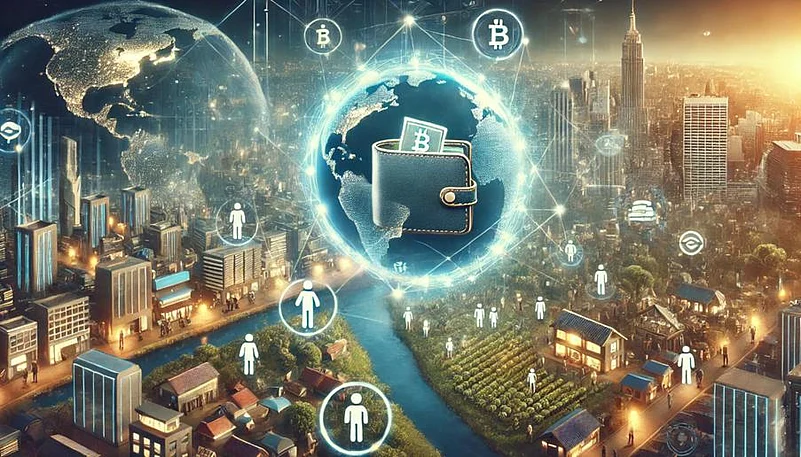Financial inclusion has been a challenge in many parts of the world, especially in emerging markets where traditional banking infrastructure is limited. Billions of individuals are unbanked or underbanked and have difficulty accessing basic financial services such as savings accounts, credit, and secure transactions. But digital assets are revolutionizing the status quo, presenting a new way to financial empowerment for those who have been excluded from the formal economy.
The digital assets, either tokenized assets or cryptocurrencies, are emerging as powerful tools in bridging financial gaps. Through the utilization of blockchain technology, they offer borderless, secure, and transparent financial services that are not based on the vulnerabilities of traditional banking systems. This piece focuses on how digital assets are pushing financial inclusion and changing how people relate to the global economy.
Breaking Down Banking Barriers
Traditional financial institutions normally demand extensive paperwork, minimums, and geographical proximity to a branch office—constraints that preclude millions from accessing financial services. Digital assets do away with these constraints as a user is able to make and hold digital wallets with little requirement. An internet connection and a smartphone may be the sole requirements to participate in the digital economy, providing rural community residents with the capability to store, send, and receive payments in a secure environment.
In addition, blockchain transactions are cross-border and free of third-party interference. The characteristic is valuable for migrant workers who remit money to sending countries. Regular remittance services are slow and expensive, which takes days for transactions to settle and with a high fee rate. Digital assets, on the other hand, allow near-real-time transfers for lower costs with more funds truly reaching the intended parties without withholding and lag.
Access to Lending and Credit
Bad credit access is probably the largest obstacle for most people and small businesses to attain economic development. Conventional lenders use credit scores and extensive financial history, which most unbanked citizens lack. Cryptocurrencies, through decentralized finance (DeFi) platforms, are revolutionizing all this by establishing decentralized lending and borrowing facilities.
DeFi protocols enable borrowers to leverage their digital currency as collateral for loan access independent of credit history or historical banking relationships. Smart contracts—executable contracts on the blockchain—make lending transparent and automatic, minimizing the risk of default. Smart contracts have enabled small business owners, farmers, and entrepreneurs in developing economies to gain access to much-needed capital to grow their businesses without being subjected to expensive lending terms.
Protection of Wealth Against Economic Volatility
In financially unstable regions where there is rampant inflation and unreliable national currencies, digital assets become an alternative store of value. In most parts of such regions, people cannot store their funds because currency becomes devalued so quickly. Digital assets function as a distributed, in the majority of cases more stable, store of value, enabling people to protect their monetary assets from dependence on standard banking infrastructure.
Moreover, blockchain transparency and security qualities avoid corruption and fraud in transactions. Electronic payment on an irreversible ledger guarantees responsibility, which eliminates the possibility of financial abuse, especially in environments where banking governance is poor or corrupted.
Facilitating Micropayments and Digital Trade
Digital assets facilitate financial inclusion a second way through the facilitation of micropayments, which are indispensable to digital trade and the sharing economy. In most of the poor communities, most people earn their incomes from small-scale services, freelancing, or content production. It has long been an exorbitantly expensive process using traditional payment methods. With digital currencies, cross-border payments are cheap and instant, however. It facilitates immediate payments by workers and business owners without geographical constraints.
This freedom to trade encourages economic engagement and provides new avenues of revenue for those who would otherwise be locked out of the world economy. Identity solutions based on blockchain are also on the way, which will allow those who lack formal identification to have safe access to digital financial services and establish financial histories that can ultimately integrate them into the larger financial mainstream.
Conclusion
Digital assets are becoming the solution to financial inclusion. By abolishing the historic banking constraints, making credit affordable, safeguarding wealth from market volatility, and providing low-cost digital payments, they empower financially excluded individuals. With increasing adoption and changing regulatory environments, digital assets can unveil a more open and balanced international financial system.
But issues like digital literacy, regulatory hurdles, and cybersecurity threats need to be overcome in order to unlock the full potential of this new financial paradigm. With ongoing innovation and judicious adoption, digital assets can be at the vanguard of revolutionizing financial access for billions of people globally, opening up new avenues for economic engagement and growth.














